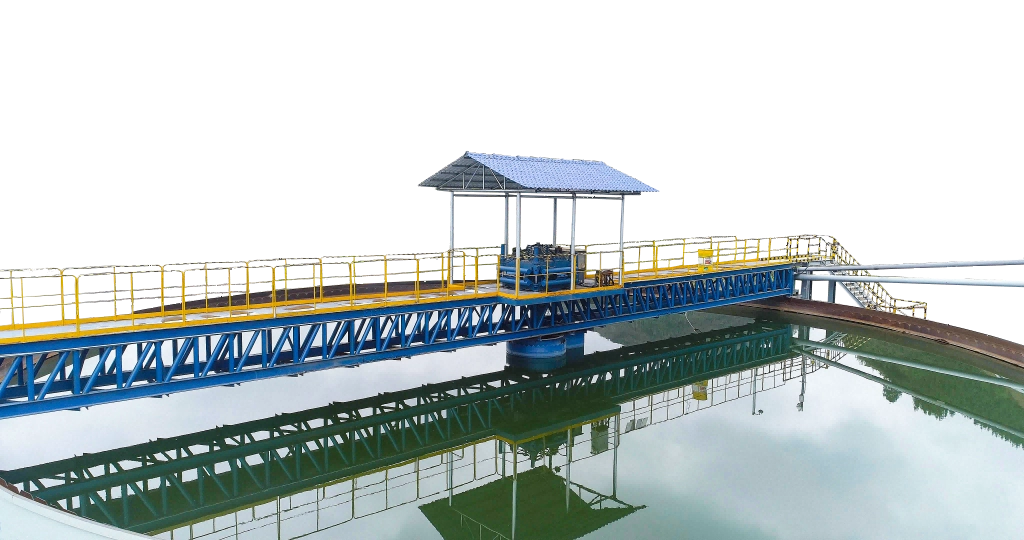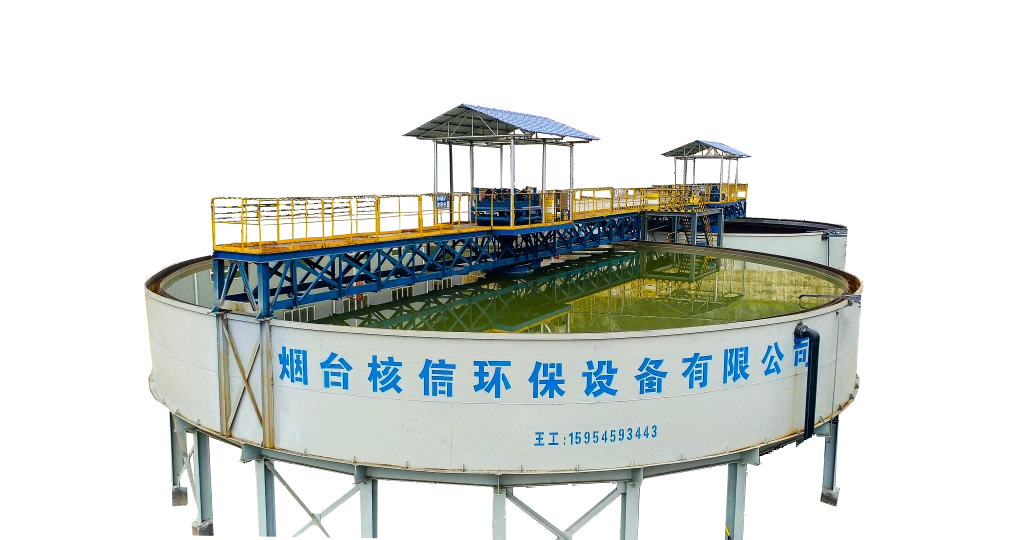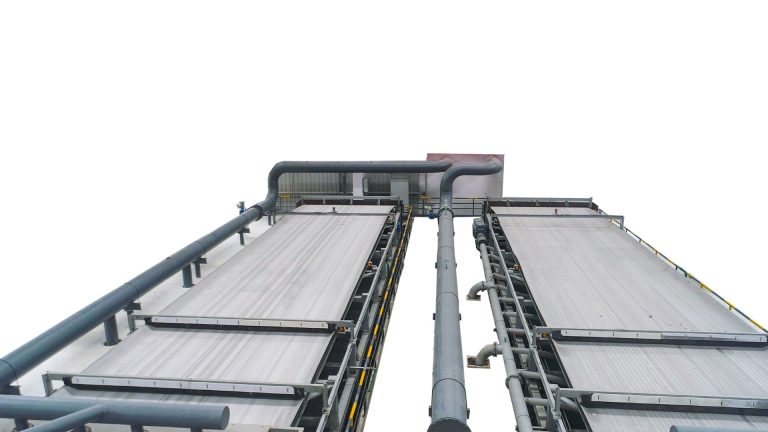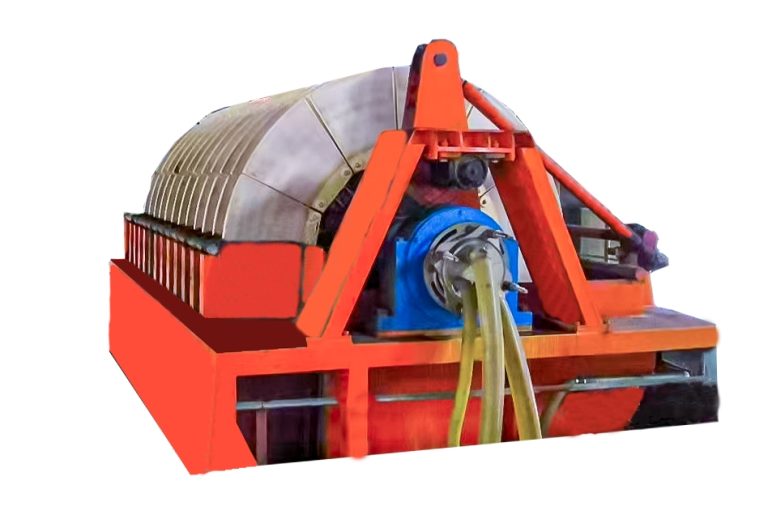
Alta eficiencia espesantes tienen una importancia inmensa en la separación sólido-líquido para sectores como la minería, los productos químicos y la gestión de aguas residuales. Su eficacia depende de varios elementos. Estos incluyen las propiedades de alimentación, el ajuste del floculante, la supervisión del proceso y la estructura del equipo. Este artículo examina tácticas básicas para mejorar la productividad de los espesantes. Cubrimos todo, desde la automatización moderna hasta los métodos de mantenimiento de primer nivel. También presenta cómo Yantai Hexin Environmental Protection Equipment Co., Ltd. proporciona respuestas nuevas para resultados de espesamiento excepcionales.
¿Qué elementos afectan a la productividad operativa más gruesa?
Los espesantes de alta eficiencia sirven como unidades indispensables en las tareas de división sólido-líquido en los campos minero, procesamiento químico y medioambiental. Su rendimiento proviene de relaciones complejas entre factores de diseño, condiciones de proceso y hábitos de trabajo.
Propiedades de los alimentos y su efecto en los resultados de espesamiento
La naturaleza de la alimentación de suspensión da forma directamente a los patrones de sedimentación. La dispersión del tamaño de partículas, la composición mineral, más la presencia de arcilla o contenido orgánico pueden aumentar o reducir las velocidades de descenso. Las partículas pequeñas y las sustancias coloidales a menudo flotan más tiempo. Esto reduce la densidad del flujo inferior y la claridad del desbordamiento de barros. El reconocimiento de estos rasgos permite a los operadores ajustar las cantidades de floculante o las etapas de pretratamiento. Tales ajustes impulsan una mejor funcionalidad.
Contribución de los floculantes a la aceleración del asentamiento
Los floculantes demuestran ser fundamentales para agrupar partículas finas en grupos más grandes. Estos grupos caen mucho más rápido. Elegir el tipo correcto de polímero - aniónico, catiónico o no iónico - es crítico. Así son el peso molecular y la cantidad de dosis. Estos deben coincidir con el maquillaje exacto de la suspensión. Demasiado polímero crea flocos flotantes o desbordamiento extremadamente nublado. Demasiado poco causa una compactación débil.
La influencia de la densidad de los lodos en los caudales y la limpieza
Las mayores densidades de alimentación aumentan el volumen de sólidos. Sin embargo, podrían reducir la eficiencia de asentamiento si se manejan mal. Por otro lado, las alimentaciones extremadamente delgadas alargan el tiempo de procesamiento. También restringen el rendimiento. Encontrar el punto dulce en la densidad de alimentación es muy importante. Logra un flujo inferior grueso sin perder la transparencia del desbordamiento.
Diseño del sistema de rake y manejo del par
Los brazos rake sirven a un propósito clave. Desplazan los sólidos asentados hacia el cono de salida. Su forma, velocidad y regulación del par afectan a la compresión del lecho. También detienen el ratholing o los atascos mecánicos. Los planes de espesantes contemporáneos incluyen con frecuencia salvaguardias de sobrecarga de par. Esto evita daños durante situaciones inestables.
Yantai Hexin Ambient Protection Equipment Co., Ltd.
aborda estos problemas a través de su serie de espesantes de alta eficiencia NGZ. Elaboran sistemas de rastrillo con un manejo de par refinado. La compañía también ofrece soluciones personalizadas basadas en las características de los lodos.
¿Cómo los sistemas de supervisión de procesos aumentan los resultados más gruesos?
Las disposiciones automatizadas están remodelando las actividades espesantes. Permiten ajustes instantáneos cuando los estados del proceso cambian.
Ventajas del seguimiento y regulación automatizados
La automatización proporciona una densidad de flujo inferior y una pureza de desbordamiento más estables. También reduce la participación del operador. Los bucles de retroalimentación emplean sensores de nivel de lecho, monitores de par de rastrillo y medidores de flujo de alimentación. Estos permiten el control dinámico de la dosificación del floculante. También ajustan la velocidad del rastrillo y la entrada de agua de dilución.
Instrumentos sofisticados para la supervisión de las existencias de sólidos y el nivel de la cama
Los espesantes modernos usan detectores de altura de lecho basados en sonar. También utilizan medidores de densidad nuclear y sensores de presión. Estas herramientas rastrean el inventario de sólidos con precisión. Proporcionan datos prácticos. Esto mejora la estabilidad del proceso y reduce los cambios del flujo de salida.
Yantai Hexin Ambient Protection Equipment Co., Ltd.
incorpora aspectos de control automatizado en sus espesantes NGZ. Esto mantiene un rendimiento máximo en escenarios de trabajo cambiantes. Esto se logra a través de sistemas de instrumentación inteligentes.
¿Qué hábitos de mantenimiento apoyan la confiabilidad de espesor de larga duración?
La vida útil del equipo depende de los planes de mantenimiento activo. Esto evita paradas sorpresas.
Comprobaciones regulares e intercambios de componentes desgastados
Los exámenes visuales frecuentes detectan problemas temprano. Inspeccione rastrillos, conjuntos de accionamiento, sellos, alimentadores y conos de flujo inferior. Reemplace artículos dañados como casquillos o cuchillas de raspador. Esto mantiene la eficiencia continua.
Horarios de mantenimiento preventivo para limitar el tiempo de inactividad
La lubricación planificada de las cajas de cambios es vital. Así también es la calibración del sensor, la confirmación de la configuración del par y la limpieza de la lavadora de desbordamiento. Estos pasos forman una base de mantenimiento preventivo. Disminuyen las reparaciones de emergencia que interrumpen la producción.
Yantai Hexin Ambient Protection Equipment Co., Ltd.
respaldo fiabilidad duradera con controles de calidad estrictos durante la fabricación. También ofrecen asistencia técnica de por vida después de la instalación. Antes del envío, realizan tres pasos de verificación:
Examen de materiales
Revisión de fabricación de componentes
Inspección previa al envío de la máquina completa
Las autocontroles confirman el número de artículos, los tipos de modelos, los pesos y los estándares.
¿Qué cambios de diseño pueden aumentar la capacidad de flujo más gruesa?
Los avances en el diseño desempeñan un papel decisivo. Maximizan los caudales mientras protegen la calidad.
Refinación de Feedwell para una mejor floculación
Un sistema de alimentación inteligentemente construido difunde la energía de la lechada entrante. También fomenta la mezcla floculante eficaz. Características como deflectores o puntos de entrada laterales aumentan la dispersión de energía. Fomentan el flujo uniforme útil para el crecimiento del floco.
Forma de base inclinada para ayudar al asentamiento productivo
Los fondos inclinados del tanque ayudan a canalizar los sólidos depositados hacia la salida. Requieren un mínimo trabajo de rastrillo, lo que ahorra energía al tiempo que fortalece el empaquetado de sólidos en el cono.
Áreas de Alta Presión para la Densidad de Subflujo Superior
La adición de zonas de compresión dentro del espesante permite una deshidratación adicional, lo que va más allá de la simple sedimentación por gravedad. Estas zonas utilizan fuerza hacia abajo a través de rastrillos o dispositivos mecánicos. Exprimen agua atrapada de camas asentadas.
Yantai Hexin Equipo de Protección Ambiental Co., Ltd.
Los espesantes NGZ tienen formas modernas de tanque. Incluyen diseños de alimentación personalizables hechos para usos particulares. Esto aumenta el rendimiento de la capacidad de flujo.
¿Cómo está conectado el uso de energía a la productividad más gruesa?
El ahorro de energía se vuelve más vital debido al aumento de los costos en las industrias que utilizan espesantes.
Evaluación del uso de energía frente al volumen de sólidos
Observar la potencia consumida por unidad sólida procesada muestra eficiencia mecánica. La alta potencia puede señalar problemas. Estos incluyen sobrecargas de rastrillo o sistemas de movimiento de cama deficientes que necesitan corrección.
Tácticas para reducir el uso de energía mientras se mantiene la producción
Cambiar las velocidades de rastreo utilizando datos de nivel de cama. Utilice los modos de funcionamiento a tiempo parcial durante períodos de silencio. Esto ahorra energía sin perjudicar la deshidratación. La optimización del sistema de accionamiento también reduce notablemente el consumo total.
Yantai Hexin Ambient Protection Equipment Co., Ltd.
suministra máquinas de baja falla. Cuentan con unidades de alta capacidad. Estos equilibran las demandas de potencia con las necesidades de producción de manera efectiva.
¿Cómo pueden las instrucciones del operador elevar los resultados del espesor?
La habilidad humana sigue siendo insustituible, incluso con la automatización. Esto es cierto para tareas de separación complejas como el espesamiento.
Mejores opciones a través de la comprensión del proceso
Los operadores capacitados en dinámica de fluidos de sedimentación toman decisiones más inteligentes. Ajustan las velocidades de alimentación o las dosis de floculante durante las interrupciones. Esto mantiene la calidad del producto a pesar de las perturbaciones.
Recursos de Formación de Simulación para el Crecimiento de Capacidades
Los gemelos digitales o las plataformas de simuladores permiten al personal probar situaciones de forma segura. Aplican cambios en operaciones reales más tarde. Esto acorta los períodos de aprendizaje y aumenta la confianza del equipo.
Yantai Hexin Ambient Protection Equipment Co., Ltd.
ayuda a los clientes con programas de enseñanza expertos. Todo el personal del proyecto recibe orientación específica para la tarea. Esto mejora la disponibilidad operativa inmediatamente después de la instalación.
¿Por qué es importante la elección del proveedor para el logro ideal del espesor?
Elegir el proveedor de engranajes adecuado afecta más que el costo inicial. Forma el éxito a largo plazo a través del trabajo en equipo técnico y la consistencia del servicio.
Ayuda de ingeniería y necesidad de personalización
Cada aplicación presenta desafíos distintos. Los proveedores deben proporcionar servicios de asesoramiento de ingeniería. Deben adaptar los tamaños de los tanques, las configuraciones de accionamiento o las reglas de control a las necesidades del cliente. Las opciones estándar por sí solas no serán suficientes.
Servicios de vida útil del equipo y acceso al soporte técnico
La ayuda posventa garantiza resultados continuos a lo largo de los años. Yantai Hexin Environmental Protection Equipment Co., Ltd. proporciona asistencia de por vida. Si surgen problemas durante el uso, la ayuda en línea está disponible las 24 horas. Si las conversaciones remotas no lo solucionan, envían técnicos a las plantas del cliente de forma gratuita. Esta dedicación define la confianza del proveedor a través de décadas de equipo servicio.
Con aproximadamente 20 años enfocados en la producción de maquinaria de filtración, poseen la certificación ISO9001. Su mecanizado de clase mundial garantiza producto exactitud. Esto los convierte en un socio perfecto para respuestas de espesamiento a medida. Respaldan estos con fuertes servicios de ciclo de vida a nivel mundial.
¿Quién es exactamente Yantai Hexin Environmental Protection Equipment Co., Ltd.?

Yantai Hexin Ambient Protection Equipment Co., Ltd. especializada en tecnología de separación sólido-líquido. Sus ofertas incluyen filtros de cinta, filtros de cerámica, prensas de filtro de torre y, lo que es importante, la gama de espesantes de alta eficiencia NGZ. Estas unidades sobresalen en la manipulación de residuos mineros y el procesamiento químico.
Su equipo cumple estrictamente con todos los estándares nacionales, industriales y corporativos. Esto garantiza la competitividad mundial a través de una sólidez de diseño avanzada. Gestión e ingenieros tienen las cualificaciones adecuadas. Esto demuestra la dedicación más allá de la maquinaria a la grandeza operacional a través de estructuras de apoyo dirigidas por expertos.
Pensamientos finales
Aumentar los espesantes de alta eficiencia requiere un método completo. Cubre el estudio de las propiedades de los alimentos, la inclusión de automatización inteligente, hábitos de mantenimiento estrictos y ajustes de diseño inventivos. Lo más crucial es que requiere asociación con proveedores cualificados como Yantai Hexin Environmental Protection Equipment Co., Ltd. Su dedicación, desde la adaptación de ingeniería hasta la ayuda post-instalación de por vida, garantiza que los clientes cumplan objetivos operativos duraderos en diversos sectores.
Preguntas frecuentes
¿Cuál es el trabajo principal de un espesante de alta eficiencia?
Un espesante de alta eficiencia enfoca los trozos sólidos de la suspensión. Permite que los sólidos caigan por la gravedad mientras hace líquido desbordado claro. Las características modernas como los sistemas de rastrillo mejorados y los feedwells optimizan esto.
¿Con qué frecuencia se debe comprobar el engranaje espesante?
Las partes clave necesitan una revisión regular semanal o mensual. La frecuencia depende de las condiciones de trabajo. Los artículos desgastados deben revisarse según los planes de mantenimiento preventivo.
¿Pueden los espesantes existentes agregar sistemas de automatización?
Por supuesto. Muchos espesantes actuales aceptan nuevos instrumentos. Estos incluyen sensores de altura de cama o controladores basados en PLC. Permiten una mejor precisión de seguimiento y capacidades de auto-ejecución.









